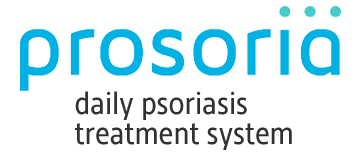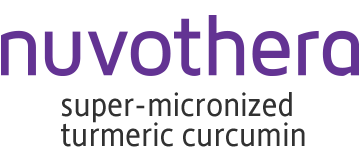
Another new psoriasis product. Another likely fail.
Psoriasis isn’t an easy condition to treat, and many treatments give mediocre results at best. Our expectations are often so low, even a slight improvement seems like a win.
Even with low expectations, we get frustrated, though. If a product isn’t working within the first month, we stop using it and chalk it up to another disappointment.
We try to remain hopeful. Maybe the next treatment will be different… maybe THIS treatment will be the one that works for me.
But here’s the catch: You may not see results immediately… even if a treatment is actually working. Don’t stop before you’ve given it time to be effective.
How long does psoriasis take to clear up? Longer than you think.
Sure, some products don’t deliver on their promises. But others just need some time to really work. Here’s what to expect.
6 Factors That Affect Psoriasis Healing Time
<iframe width="320" height="192" src="https://www.youtube.com/embed/y17rU9n4AB8" title="YouTube video player" frameborder="0" allow="accelerometer; autoplay; clipboard-write; encrypted-media; gyroscope; picture-in-picture" allowfullscreen></iframe>
Everyone is different in terms of the severity of their plaque psoriasis, their immune makeup, and the way the symptoms show up. Psoriasis is multifactorial — multiple issues contribute to psoriasis and result in multiple symptoms.
Each of these factors affects how long it will take to see results from your treatment:
Inflammation is an internal problem of the whole body that shows itself on the skin. The more severe the inflammation, the longer the healing process.
2. How long the inflammation has been in progress
If you start treating psoriasis in the early stages, you see improvement faster than with long-term inflammation.
The thicker the scale, the longer it takes to heal. Removing or reducing the scale is often helpful to speed up treatment results.

4.The location of the scales
Areas like the knees and elbows have thicker scales; these areas rub or bump easily, which causes thicker scales. Areas on the leg and below the knee also tend to take longer to heal. Reddened patches in folds of skin with inverse psoriasis also can be difficult to treat.
5. The thickness of the raised skin below the scale
The skin below the scales shows the extent of inflammation. On light skin, inflammation looks pink. On dark skin tones, such as skin of color, it's a darker, hyper-pigmented area. If the pink/dark skin below the scale is thick and raised, it will take longer to resolve.
6. Percent of body area covered
The more of your skin that’s affected, the higher the inflammation. And more inflammation usually means a longer healing time.
Adjust your expectations about healing time according to your specific symptoms. If it seems like it may take a little longer to heal, that’s okay. In the section below, we'll explain how you’ll know it’s improving.
What Does Psoriasis Look Like When It’s Healing?
Allow enough time for your treatments to begin working. The National Psoriasis Foundation recommends using a treatment for at least 3 months before evaluating your results. They consider a 75% improvement in 3 months a success.
With mild to moderate plaque psoriasis, you’ll typically start seeing results in the first 4-6 weeks if the treatment is working. Here's what you'll notice.
Month 1: Reduced Scaling and Flaking
You’ll first notice less scaling and flaking. For some people, the color of the inflammation underneath the scales begins to fade. You may initially see pink or reddened skin that may be raised once the scales are removed.


Month 2-3: Reduced Plaque Thickness and Redness
In month two and three, you’ll continue to see improvement. The thickness of the raised skin becomes flatter and ultimately returns to the level of your normal skin over time. You should see less scaling and redness.


Month 3+: Greater Clearing and Reduced Redness/Pigmentation
During Month 4 the skin continues to improve significantly and begins to look closer to the surrounding skin with less scaling and the raised skin becomes level with the surrounding area. The skin gradually continues to lighten back to its normal color or pigmentation over time. Pink skin resolves faster. The pigmentation of darker skin can take longer to lighten, and it may take several months to achieve significant lightening. Remember everyone is different so individual results may vary.


Does Psoriasis Go Away on Its Own?
Psoriasis comes in cycles. It can flare up spontaneously, then seem to fade just as abruptly. Some people notice it’s triggered by stress or certain foods. But since it’s a chronic inflammatory condition, it won’t just disappear. If it fades, it’s in remission and symptoms will likely return.
Typically, it takes some level of treatment — either with prescription medicine or proven OTC products — to reduce the symptoms and keep psoriasis under control.
When Can I Stop Treating Psoriasis?
Psoriasis won’t go away overnight. It’s a chronic condition that can take months to heal. The key is treating it consistently. Then, once it starts to improve, DON’T STOP.
It’s totally normal to stop doing something once we think we’ve fixed the problem. We’ve been trained to stop using our antibiotics after 10 days. Topical prescriptions, such as the more potent steroids used on psoriasis, are usually so strong that we can only use them for a short time before our body needs a break. Most topical steroid psoriasis prescriptions are only used for flare-ups.
Non-prescription psoriasis treatments trick us too. We find them in the first aid or moisturizer section of the drugstore, but psoriasis needs more than a short-term treatment. To really treat the long-term inflammatory nature of psoriasis, you need daily care.
Prosoria isn’t made to use only when your condition flares up. It’s safe and created for long-term use. Continued use typically leads to continued improvement. Then, after you’re virtually clear of psoriasis, you keep using the treatments to keep it under control. You’ll see the appearance, softness, and quality of your skin continue to improve and stay improved.
Treating your psoriasis needs to become a habit. It’s like brushing your teeth. Sure, you might forget every once in a while, but the more you skip it, the more likely you are to have some problems. Sticking with the treatment will give you the greatest chance of success.
Not everyone is the same, and not every product works for every person. But you’ll only know whether it's effective for you if you give it enough time to work. If you’re ready to see your symptoms fade, use a daily treatment — as recommended! Only when you use your treatment on a regular basis, as directed, are you giving great results a real chance. If you are looking for an effective psoriasis treatment, there is no reason to wait.

